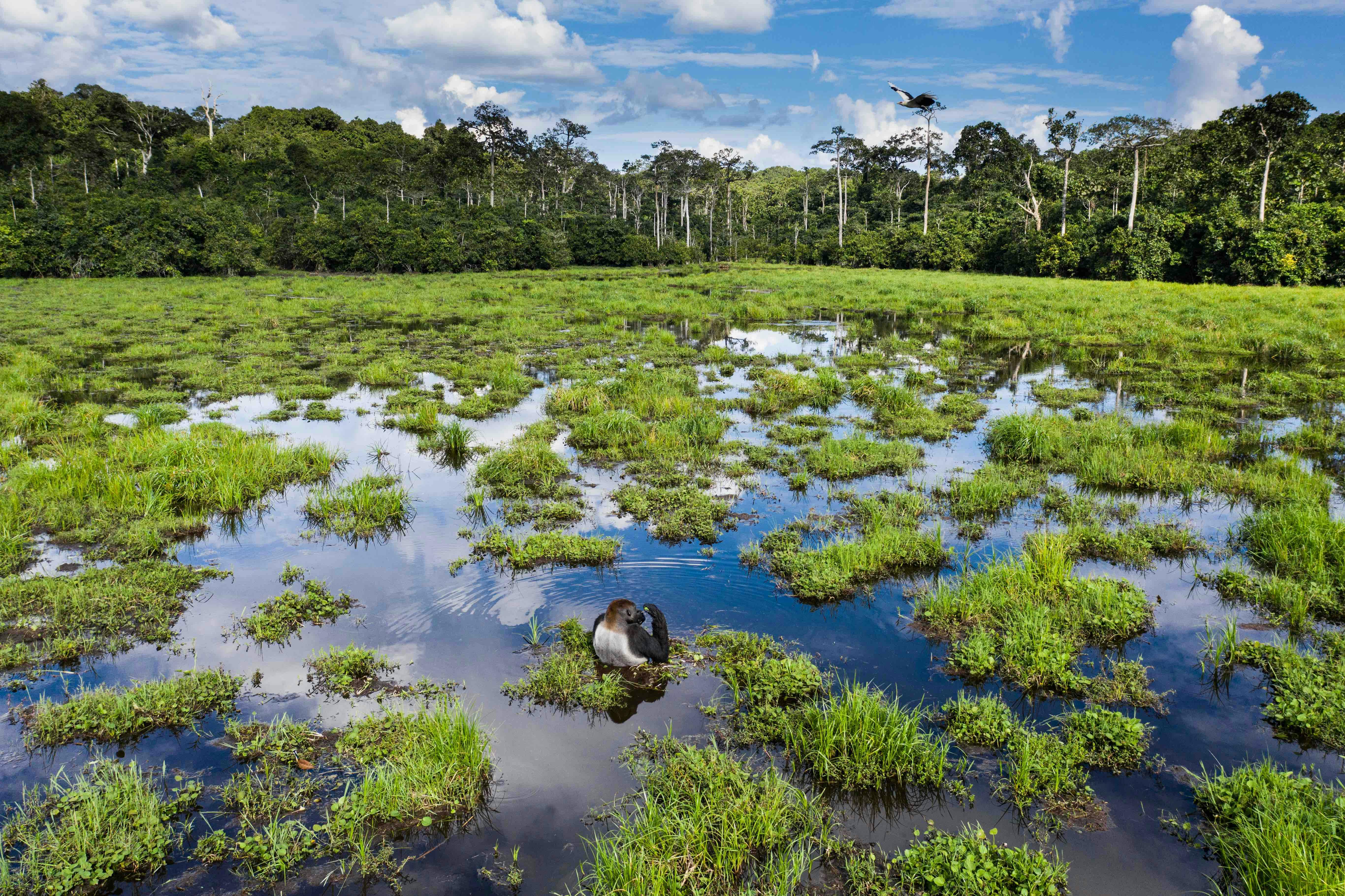
Although gorillas have a reputation in popular media of being large, dangerous animals, they are actually gentle giants. Western lowland gorillas form close-knit family groups that band together to survive in the African jungles. But as those rainforests quickly give way to agriculture and mining, gorilla numbers in the wild are also rapidly declining. For this reason, Rotterdam Zoo is committed to protecting this extraordinary species, with which we share approximately 98.3% of our DNA.
Gorilla gorilla gorilla

Up to 40 years in the wild
Standing up:
♀ 1.50 meters
♂ 1.75 meters
103-107 centimeters
♀ 90 kilograms
♂ 180 kilograms
Gorillas are the largest primates in the world. Adult males are much larger than females and have a distinctive silver-colored back: this is why they are also referred to as "silverbacks". Western lowland gorillas are slightly smaller than other gorilla subspecies. In addition, their fur is generally slightly shorter and browner. Like other great apes, gorillas do not have a tail.
Western lowland gorillas are native to Central Africa, including Cameroon, Equatorial Guinea, Gabon and Congo. There they live in the dense rainforests of the tropical lowlands. They also often live in swampy areas.

Gorillas are known for their powerful build. Their muscular limbs with opposable thumbs help them climb trees and grasp food. In addition, a gorilla has very strong jaws; twice as strong as the jaws of a lion! Yet it is not just brute force in gorillas; they are also very intelligent. For example, scientists have seen gorillas in the wild use branches to measure how deep a ditch is, or to retrieve ants from an anthill without getting stung.

Western lowland gorillas live in groups of up to 30 animals. These groups consist of one silverback, several females and their young. Families roam the rainforest together to find new places to sleep and fresh food. In doing so, they are also very important to the rainforest; for the seeds of the fruits they eat, they defecate elsewhere. In this way, they help spread seeds, allowing new trees to grow.

One of the main causes of deforestation in Central Africa is mining. This is one of the few areas in the world where coltan can be found. Coltan is a raw material widely used in cell phones and laptops. By recycling old cell phones, less coltan needs to be mined. This way, less rainforest is cut down, which is better for the gorillas. Rotterdam Zoo collects old cell phones and uses those to raise money to protect gorillas in the wild.
Photo: WCS Congo | Scott Ramsey
The western lowland gorillas at Rotterdam Zoo have many trees and rocks in their outdoor enclosure to climb. The trees also provide places to hide, as do the caves they can shelter in. The five-meter-high walls of the outdoor enclosure are smooth to prevent escapes. The indoor enclosure also offers plenty of places to climb. To give the gorillas extra peace and quiet, some of the windows are shielded with stickers.

